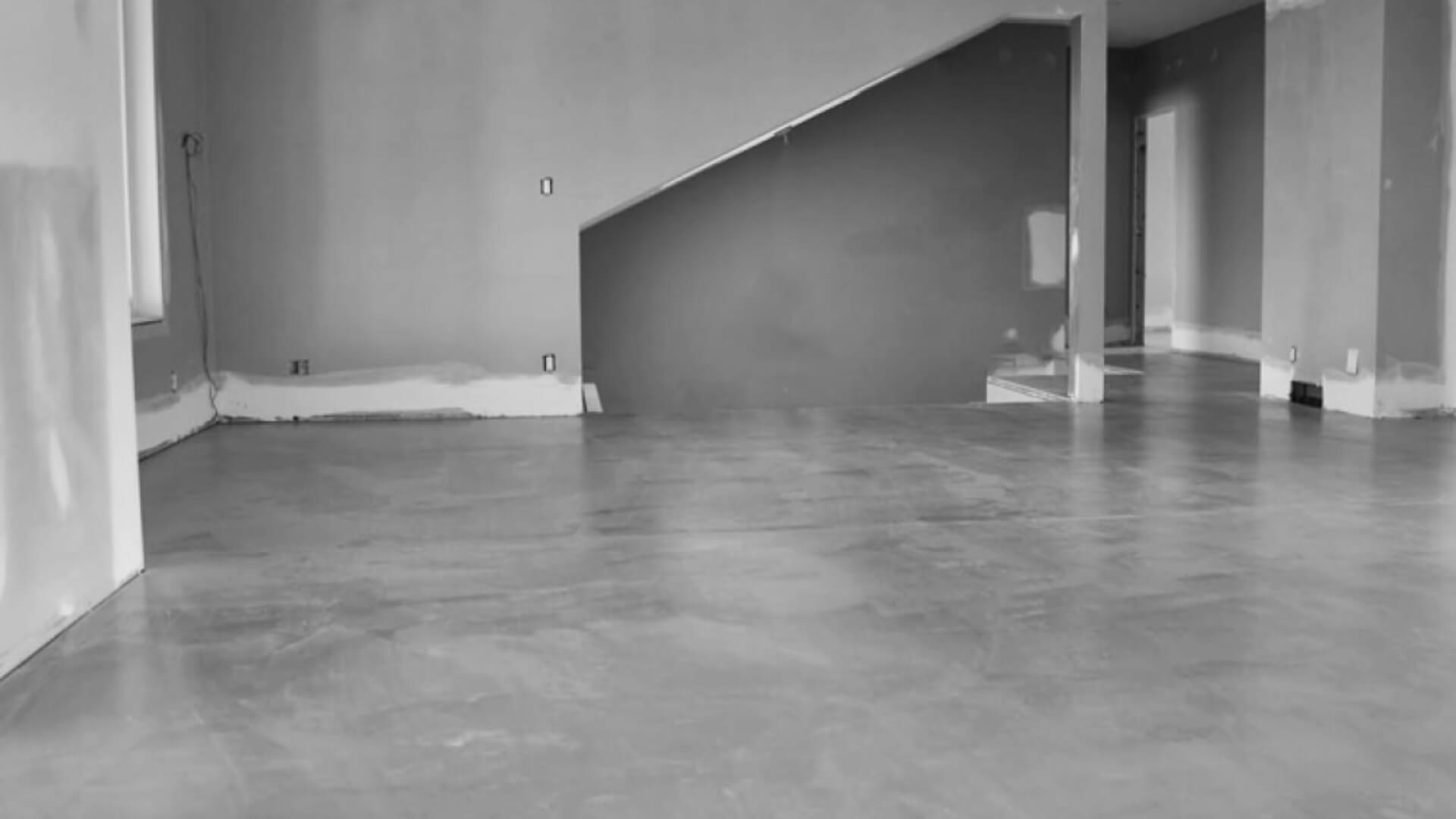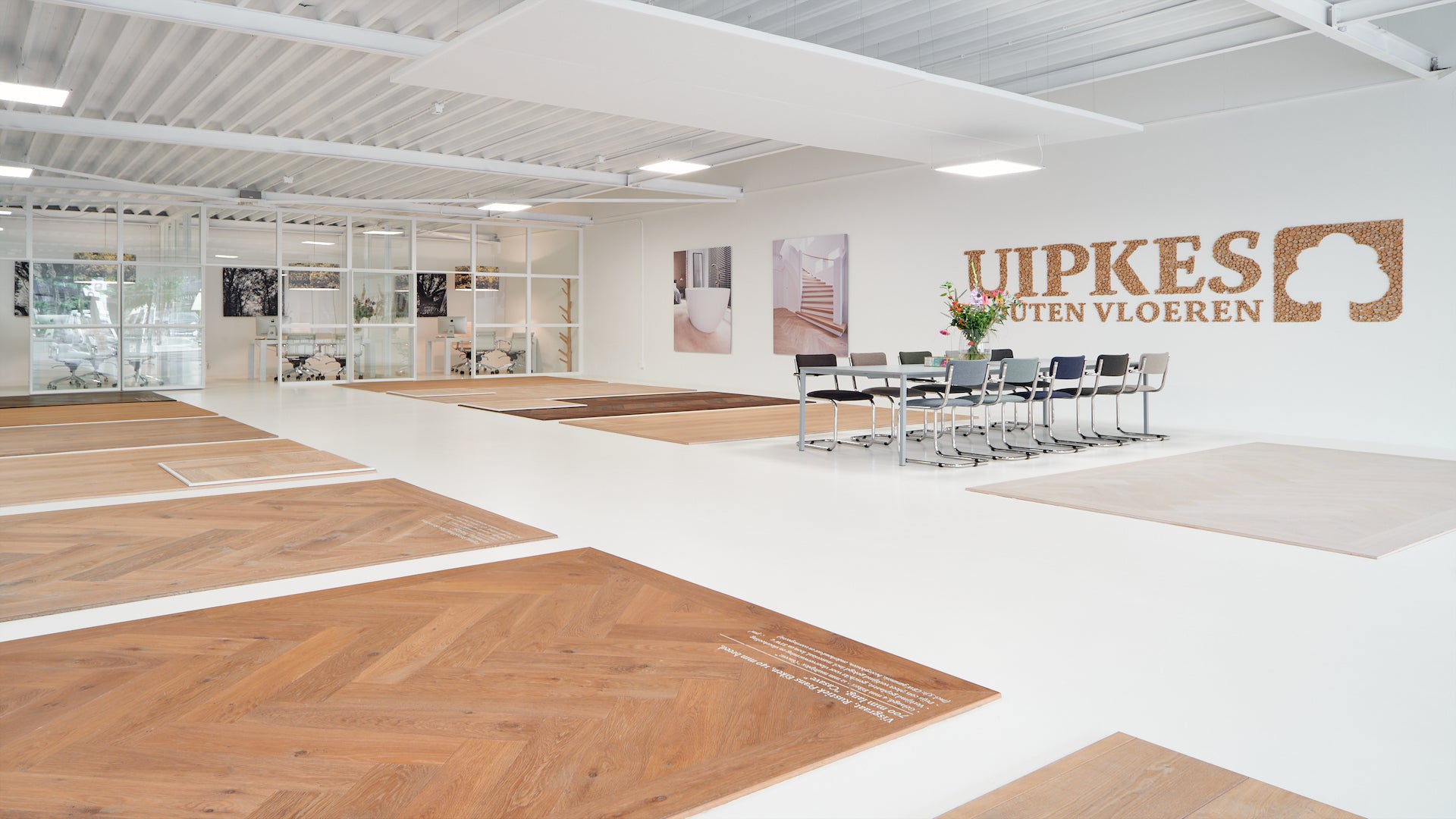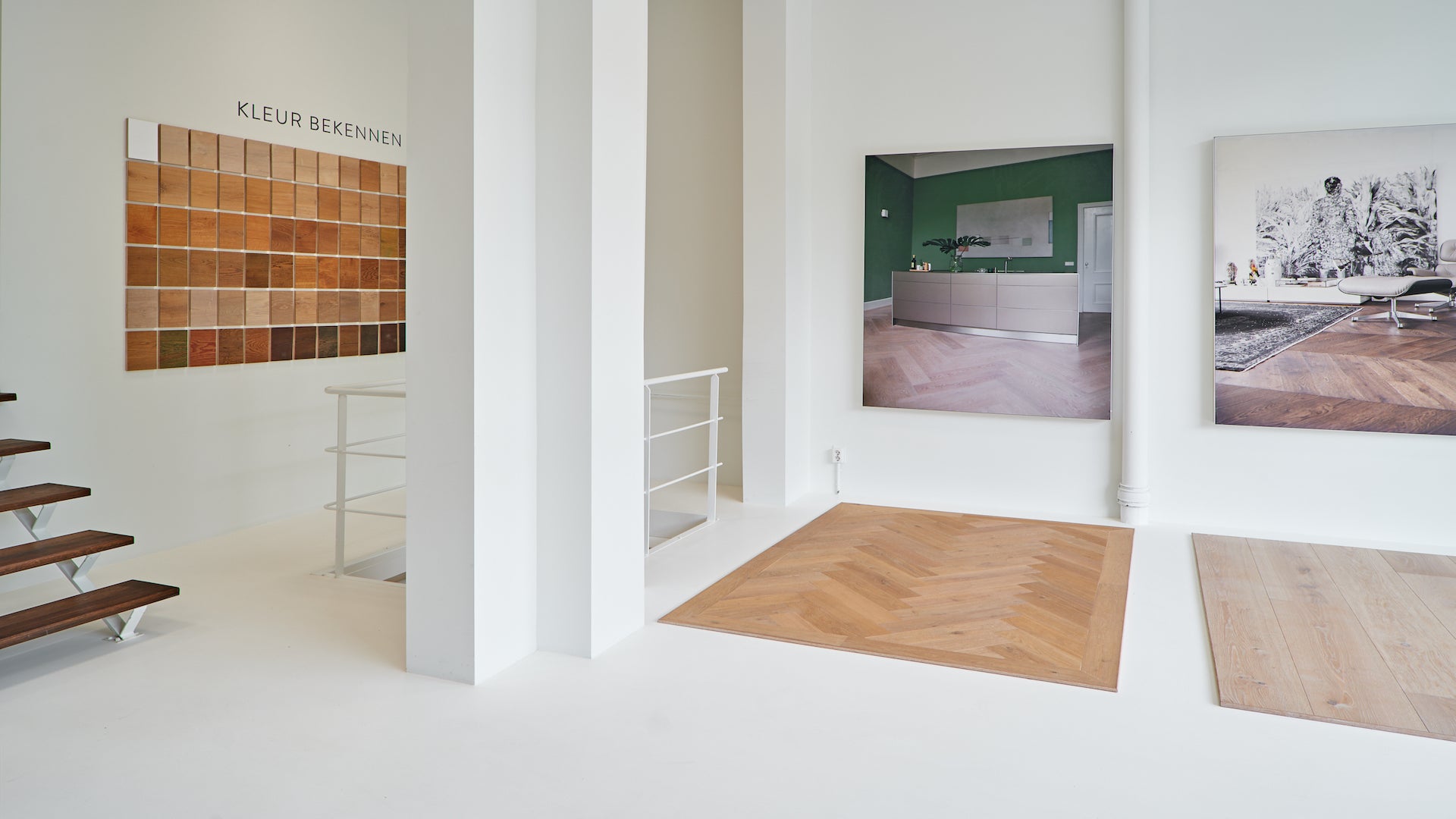ZANDCEMENTVLOER

Bezoek de showroom
Sand cement floors, known as smear floors, are finishing floors made of sand bound by cement. These floors are often used in residential construction and are sometimes provided with a wear layer. in short, an excellent basis for any wooden floor.
SAND CEMENT FLOOR AS SUBFLOOR
A sand-cement screed is usually applied to a load-bearing concrete floor. In both new construction and renovation construction the sand-cement floor is used. The lubricating floor can be used in different thicknesses, depending on the location, use and any pipes that are processed in the floor.
The thickness of the floor is usually between 30 mm and 50 mm. The sand-cement floor is intended to achieve a certain height/level and has a leveling function. Unlike the concrete floor, the floor has no load-bearing function.
To apply wooden floorsThe strength class D20 is prescribed on a sand-cement floor. This is important for skin tensile strength. The floor must be able to absorb the stresses that a wooden floor entails. In addition, it is important that the floor is not too sandy, otherwise the wooden floor may come apart after gluing it to the sand-cement floor.
HUMIDITY
Because the pores of a sand-cement floor are wider than those of a anhydrite floor and the floor is more moisture resistant, moisture sensitivity is less critical. These properties allow any moisture supplied from a construction floor to evaporate more quickly. In addition, the sand-cement floor is lighter in weight due to the open structure.
In general, a required residual moisture percentage of a maximum of 2.0% applies to a sand-cement floor. When combined with underfloor heating this should be a maximum of 1.8%. The floor must be at least 28 days old before a correct moisture measurement can be carried out.
NATURAL DRYING TIME
The following schedule can be used for the drying time of a sand-cement floor: an average of 1 cm drying time per week applies for the first four weeks, 1 cm per 2 weeks for subsequent weeks.
Thickness 4 cm: drying time 4 to 6 weeks
Thickness 6 cm drying time of 8 to 10 weeks
Thickness 8 cm: drying time of 12 to 14 weeks
It is important to take the above schedule into account in the planning.
SPEED UP DRYING TIME
In contrast to the natural way of drying, it is better to add a drying time accelerator. Heating can start after approximately 2 weeks. After the combustion protocol, we can carry out a preliminary inspection and installation.
Ontvang thuis advies
FLATNESS OF THE CEMENT FLOOR
A sand-cement floor is poured, it is important that the mortar is firm and does not flow too much. The mortar is distributed over the floor by a wooden or aluminum straightedge.
The floor is leveled with a steel or wooden trowel. Nowadays the floors can also be closed by machine. In corners of rooms it may happen that the floor slopes too much or creeps up.
For the installation of the wooden floor we require 'flatness class 2'. This means that the floor may have a maximum gradient of 4 mm in height over a length of 2 meters.
FLOATING OR GLUED INSTALLATION?
On a sand-cement floor, both a plank floors can be installed floating or glued. A patterned floor such as a herringbone floor or chevron floor. We will always fully glue the chevron floor to the screed floor. For a wooden floor that is installed floating, we will install an intermediate floor (foil) that is separate from the screed and can absorb any minor irregularities.
Keep in mind that with a floating floor, "movement" is always noticeable when using the floor. With a Glued installation The floor parts are fully glued to the screed after it has been primed. Due to the rough structure of the sand-cement floor, it does not need to be roughened or sanded open.
SAND CEMENT FLOOR - UNDERFLOOR HEATING COMBINATION
The sand cement floor is usually applied with a wet construction underfloor heating system. This means that the underfloor heating is built from the foundation and the sand-cement screed is poured over it. The total coverage above cast pipes of underfloor heating must be at least 25 mm.
It is also possible to have a milled underfloor heating system. The pipes are milled into the sand-cement floor. It is important that these slots are filled with an epoxy-bonded material.
You can also Have underfloor heating installed by Uipkes. Both underfloor heating milling into an existing sand-cement screed or underfloor heating installing a new sand-cement screed .
POINTS TO CONSIDER FOR THE SAND CEMENT COVER FLOOR
- D20 class due to skin tensile strength
- Residual moisture percentage of maximum 2.0% or in combination with underfloor heating 1.8%
- Drying time of at least 28 days, without drying time accelerator
- Pay attention to flatness class 2, holes or other irregularities.
Showrooms
-

Alphen a/d Rijn
Euromarkt 113
-

Amsterdam
Roelof Hartstraat 4
-

Naarden
Kooltjesbuurt 1
Frequently Asked Questions
What is a sand-cement screed?
A sand-cement screed, also known as a cement screed, is a traditional screed that is used as a basis for various floor coverings. It consists of a mixture of sand, cement and water, which is applied to the construction floor and made flat.
What are the advantages of a sand-cement screed?
A sand-cement screed provides a firm and stable surface for floor coverings, such as tiles, laminate, parquet , vinyl or carpet. It can help to level out irregularities in the construction floor and create a flat surface. Sand cement screed floors have good fire-resistant properties and are durable.
How is a sand-cement screed installed?
The installation of a sand-cement screed usually involves mixing sand, cement and water in the correct proportions.
The mixture is then poured onto the construction floor and spread using a straightedge or special tool.
The floor is leveled by the use of a spirit level or laser level, ensuring that the required thickness is achieved.
How long does the drying process of a sand-cement screed take?
The drying process of a sand-cement screed can vary depending on various factors, such as the thickness of the floor, ambient temperature and humidity.
In general, a sand-cement screed takes an average of one week to dry per centimeter of thickness.
It is important to adhere to the drying times and ensure that the floor is completely dry before any further finishing or installation of floor coverings takes place.
Can a sand-cement screed be installed with underfloor heating ?
Yes, a sand-cement screed can be used in combination with underfloor heating systems.
It is important to use the correct insulation materials and underfloor heating system and follow the manufacturer's installation instructions to ensure that the floor and heating system function correctly.
Does a sand-cement screed need to be pre-treated before carpeting is installed?
Before installing floor coverings, such as a wooden floor, it may be necessary to pre-treat the sand-cement screed.
This may include applying a primer or bonding agent, depending on the type of floor covering used and the manufacturer's recommendations.
It is important to follow the manufacturer's instructions and guidelines to ensure proper adhesion and achieve optimal results.
What does a drying time accelerator do?
- Accelerating the drying process: A drying time accelerator helps speed up the hydration process of the cement, causing the water to harden and evaporate more quickly. This results in a reduced drying time of the screed.
- Reduction of drying time: Using a drying time accelerator can significantly reduce the drying time of a sand-cement screed, reducing the waiting time for further finishing or installing floor coverings.
- Improvement of planning: With a drying time accelerator, projects can be planned more efficiently because the drying time of the screed can be shortened. This allows subsequent steps, such as installing floor coverings, to be carried out earlier.
- Dependence on environmental factors: The effect of a drying time accelerator on the drying time can vary depending on various factors, such as ambient temperature, humidity and the thickness of the screed. It is important to follow the manufacturer's recommendations and take into account the specific circumstances of the project.
- Caution in dosing: It is essential to accurately dose the drying time accelerator according to the prescribed guidelines. Dosing too much or too little can lead to undesirable results, such as reduced strength or quality of the screed.


